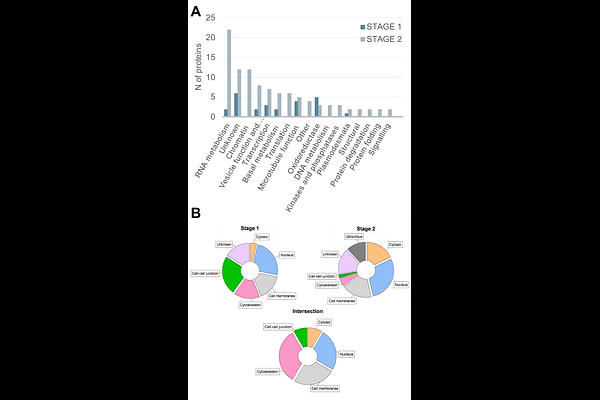The proximal proteome of FLOWERING LOCUS T LIKE 1 during rice panicle development suggests cell-to-cell mobility features

The proximal proteome of FLOWERING LOCUS T LIKE 1 during rice panicle development suggests cell-to-cell mobility features
Chirivi, D.; Bono, G. A.; de Keijzer, J.; Dreni, L.; Faoro, F.; Giaume, F.; Ferrandiz, C.; Fornara, F.; Betti, C.
AbstractFlowering is promoted by perception of favorable environmental stimuli. In rice, exposure of leaves to short days induces the differentiation of a branched inflorescence called panicle at the shoot apical meristem (SAM). Systemic communication from the leaves to the SAM is mediated by members of the phosphatidylethanolamine-binding protein (PEBP) family, including HEADING DATE 3a (Hd3a) and RICE FLOWERING LOCUS T 1 (RFT1), commonly referred to as florigens. Florigens are ~20kDa proteins translated in leaf companion cells and loaded into the phloematic stream, through which they reach the SAM. Once in meristematic cells, they are translocated to the nucleus, where they form higher-order protein complexes that include transcription factors and drive transcriptional reprogramming of meristematic cells. The activity of Hd3a and RFT1 at the SAM is partly mediated by FLOWERING LOCUS T LIKE 1 (FTL1) encoding a florigen-like protein required to accelerate flowering and establish the branching pattern of the panicle. The photoperiodic regulatory network is largely based on protein-protein interactions (PPIs), that take place in different tissues and in response to environmental variation. Capturing the full extent of these interactions for a specific protein and in vivo is a challenging task. Here, we developed a protocol of Proximity Labeling (PL) to study the interactome of FTL1 in developing panicles. We show that FTL1 associates with or is proximal to several proteins implicated in vesicular trafficking, microtubule binding and transcriptional regulation. Using a transient system, we demonstrate that FTL1 can actively move between cells, similarly to Hd3a and RFT1. This study establishes a protocol to implement PL for the study of a dynamic process during rice reproductive development, identifies interactors of FTL1, and suggests novel features possibly linked to its function.